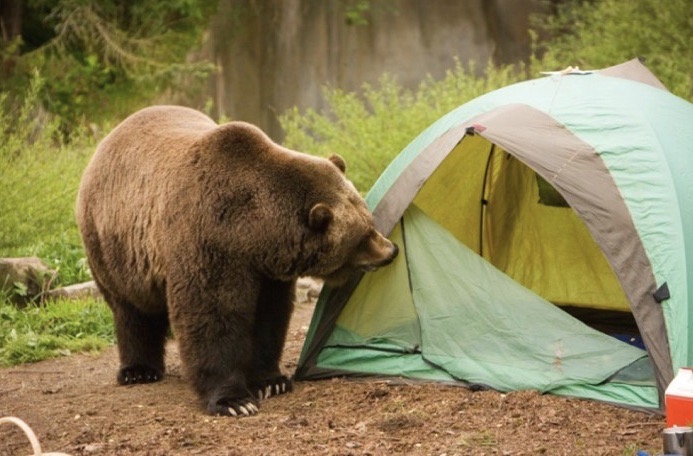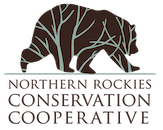Author: Linda Merigliano and Ashley Egan
Organization: Bridger-Teton National Forest
Title: Jackson Hole Recreation-Wildlife Co-existence Project
Visitation to Grand Teton National Park and the adjacent National Forests is rapidly growing in the Jackson Hole region and trends suggest that growth will continue for the foreseeable future. The JH Recreation-Wildlife Co-Existence Project explores how to sustain the wildlife values the region is known for in the face of rapidly increasing recreation use. However, to date, the problem of recreation-wildlife conflict has not been well-defined, there is insufficient evidence to validate the concerns, and there has not been clarity about which species are of most concern. Additionally, we recognize that compiling data is not sufficient to affect change in of itself. We must incorporate community engagement and strive to influence social norms and inform land management plans and actions. Although actions have been implemented over the years to minimize wildlife impacts, there is growing concern that current strategies will not adequately protect wildlife in the face of expanding recreation use.
and the adjacent National Forests is rapidly growing in the Jackson Hole region and trends suggest that growth will continue for the foreseeable future. The JH Recreation-Wildlife Co-Existence Project explores how to sustain the wildlife values the region is known for in the face of rapidly increasing recreation use. However, to date, the problem of recreation-wildlife conflict has not been well-defined, there is insufficient evidence to validate the concerns, and there has not been clarity about which species are of most concern. Additionally, we recognize that compiling data is not sufficient to affect change in of itself. We must incorporate community engagement and strive to influence social norms and inform land management plans and actions. Although actions have been implemented over the years to minimize wildlife impacts, there is growing concern that current strategies will not adequately protect wildlife in the face of expanding recreation use.
Given the need, the recreation-wildlife co-existence project aims to shift our collective action (as land managers and community members) towards co-existence and a more sustainable path for wildlife in the face of growing recreation activity. We are defining co-existence broadly to encompass how people and wildlife can live/recreate in the same place considering multiple spatial and temporal scales. For example, strategies are needed (1) to protect the quality and security of core habitat areas necessary to maintain specific animal populations, and (2) to improve interactions where humans come in contact with individual animals. Through literature review, compilation of wildlife and recreation data, public surveys, and learning forums, we are addressing five key questions:
- Where are we now?
- What is the problem?
- What can we learn from others?
- What should success look like?
- How can we achieve a community norm around co-existence?
Our focus in this investigation is on the federal public lands managed by the Forest Service and Park Service with an eye towards understanding wildlife disturbance and habituation effects due to recreation use during the snow and non-snow seasons. Indirect habitat effects such as the introduction and spread of weeds and invasive species will also be examined. Ultimately, we strive to ensure that Jackson Hole lives up to the slogan “Responsibly Wild” and continues to be a place where native wildlife species thrive.
public lands managed by the Forest Service and Park Service with an eye towards understanding wildlife disturbance and habituation effects due to recreation use during the snow and non-snow seasons. Indirect habitat effects such as the introduction and spread of weeds and invasive species will also be examined. Ultimately, we strive to ensure that Jackson Hole lives up to the slogan “Responsibly Wild” and continues to be a place where native wildlife species thrive.
Photo credits: Linda Mergliano

Linda Merigliano is a Recreation/Wilderness Program Manager in the Bridger-Teton National Forest. She initiated and is co-leading the JH Recreation-Wildlife Co-existence Project with the help of numerous partners.

Ashley Egan is a Wildlife Specialist in the Bridger-Teton National Forest. She has been leading the effort to compile and analyze wildlife data for 15 focal species as part of the Recreation-Wildlife Co-existence project.
